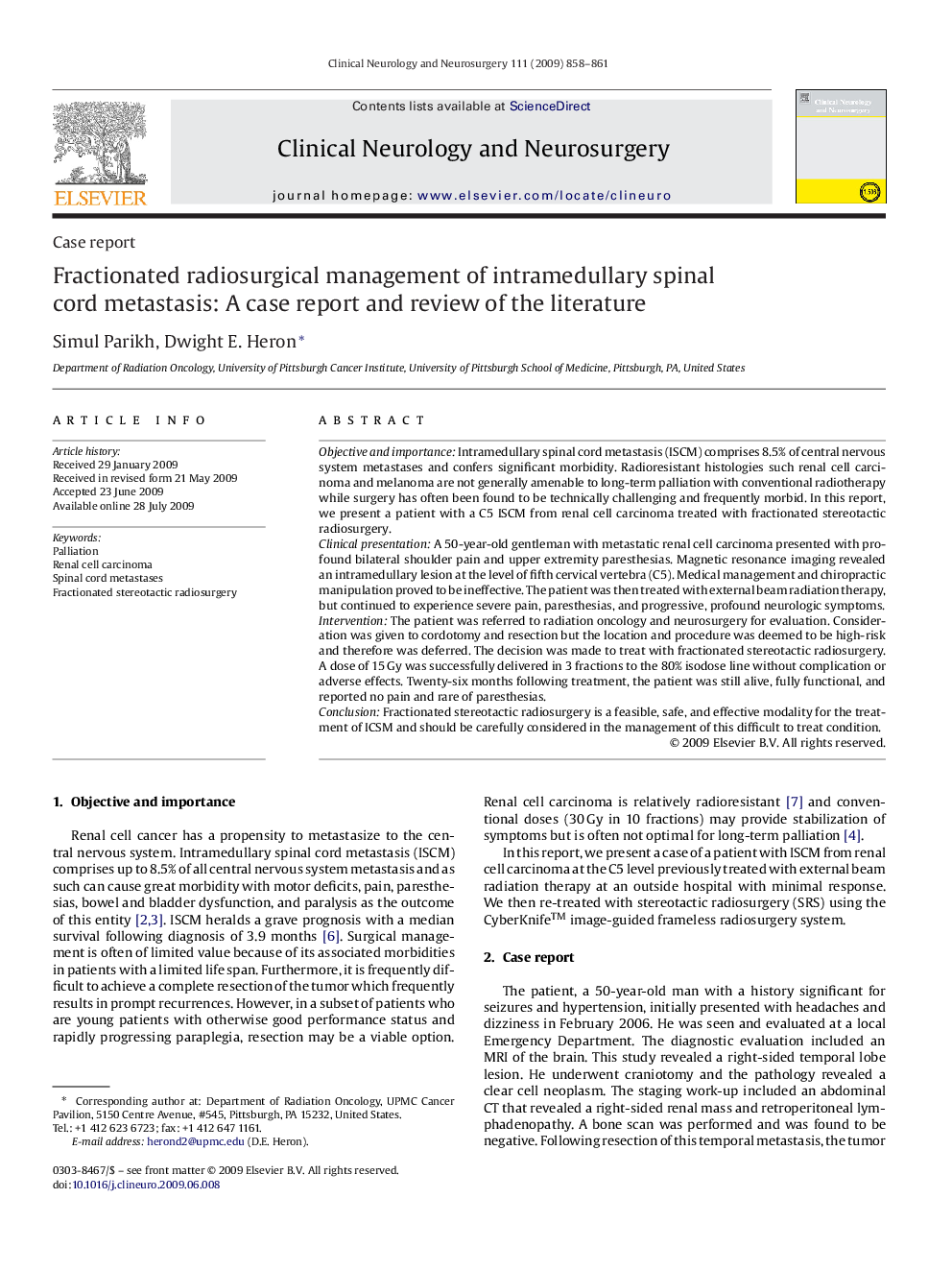| Article ID | Journal | Published Year | Pages | File Type |
|---|---|---|---|---|
| 3041370 | Clinical Neurology and Neurosurgery | 2009 | 4 Pages |
Objective and importanceIntramedullary spinal cord metastasis (ISCM) comprises 8.5% of central nervous system metastases and confers significant morbidity. Radioresistant histologies such renal cell carcinoma and melanoma are not generally amenable to long-term palliation with conventional radiotherapy while surgery has often been found to be technically challenging and frequently morbid. In this report, we present a patient with a C5 ISCM from renal cell carcinoma treated with fractionated stereotactic radiosurgery.Clinical presentationA 50-year-old gentleman with metastatic renal cell carcinoma presented with profound bilateral shoulder pain and upper extremity paresthesias. Magnetic resonance imaging revealed an intramedullary lesion at the level of fifth cervical vertebra (C5). Medical management and chiropractic manipulation proved to be ineffective. The patient was then treated with external beam radiation therapy, but continued to experience severe pain, paresthesias, and progressive, profound neurologic symptoms.InterventionThe patient was referred to radiation oncology and neurosurgery for evaluation. Consideration was given to cordotomy and resection but the location and procedure was deemed to be high-risk and therefore was deferred. The decision was made to treat with fractionated stereotactic radiosurgery. A dose of 15 Gy was successfully delivered in 3 fractions to the 80% isodose line without complication or adverse effects. Twenty-six months following treatment, the patient was still alive, fully functional, and reported no pain and rare of paresthesias.ConclusionFractionated stereotactic radiosurgery is a feasible, safe, and effective modality for the treatment of ICSM and should be carefully considered in the management of this difficult to treat condition.
